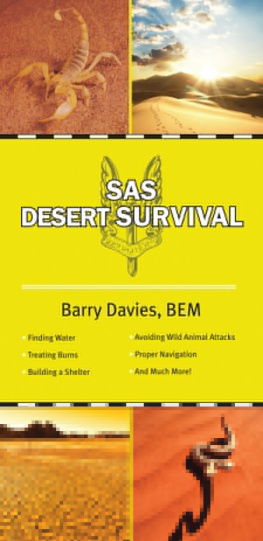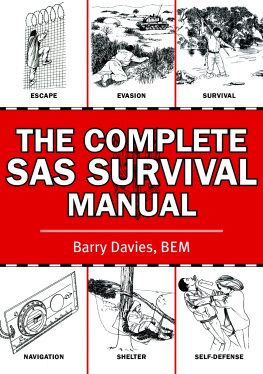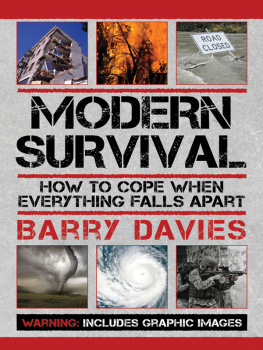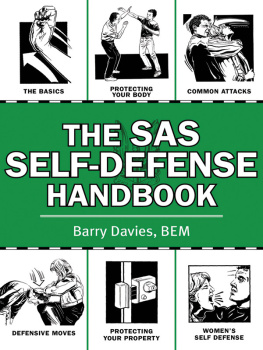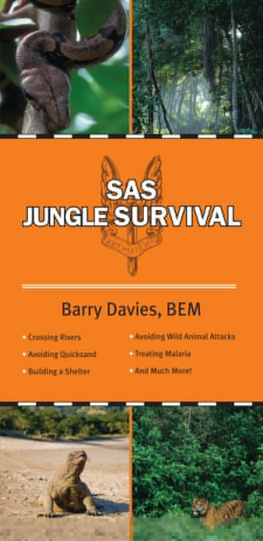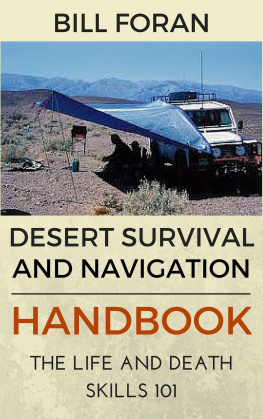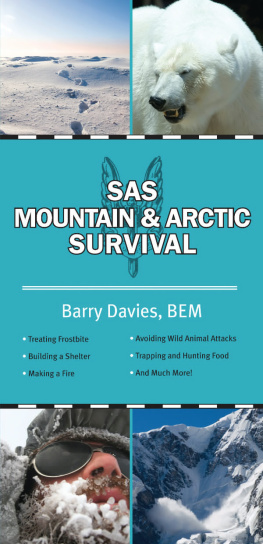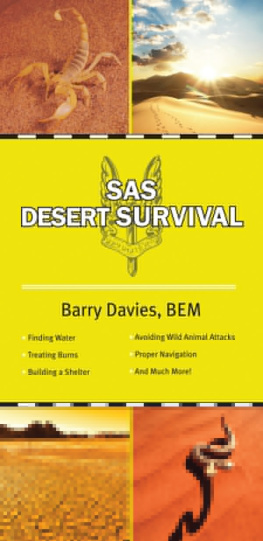

SAS
DESERT
SURVIVAL
SAS
DESERT
SURVIVAL
Barry Davies, BEM

Copyright 2013 by Barry Davis
All Rights Reserved. No part of this book may be reproduced in any manner without the express written consent of the publisher, except in the case of brief excerpts in critical reviews or articles. All inquiries should be addressed to Skyhorse Publishing, 307 West 36th Street, 11th Floor, New York, NY 10018.
Skyhorse Publishing books may be purchased in bulk at special discounts for sales promotion, corporate gifts, fund-raising, or educational purposes. Special editions can also be created to specifications. For details, contact the Special Sales Department, Skyhorse Publishing, 307 West 36th Street, 11th Floor, New York, NY 10018 or .
Skyhorse and Skyhorse Publishing are registered trademarks of Skyhorse Publishing, Inc., a Delaware corporation.
Visit our website at www.skyhorsepublishing.com.
10 9 8 7 6 5 4 3 2 1
Library of Congress Cataloging-in-Publication Data is available on file.
ISBN: 978-1-62087-274-1
Printed in China
Contents
Introduction
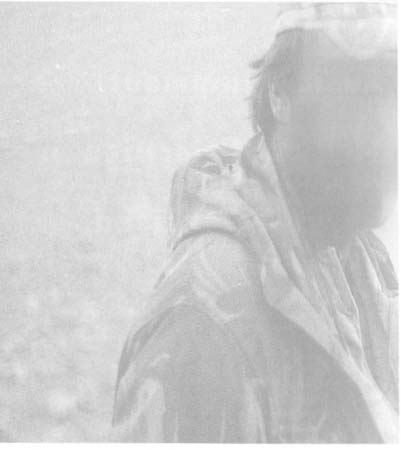
When I was a young soldier, about to join the SAS, I read a book called The Long Walk by Slavomir Rawicz. It recounts the trials endured by six men and one woman who, after escaping from a Soviet prison camp in late 1939, walked from the Arctic Circle across the Gobi Desert and south all the way to India. After 4,000 miles and 18 months four of them, including one American, survived. Their story instilled in me a never-ending thirst for all matters relating to human powers of survival.
The need to improvise in the Western world has diminished due to the easy availability of most items required to answer our every need. Food, drink, clothing and tools are cheap, commonplace items plucked from the shelves of any supermarket. The real need to improvise in the cause of survival is only faced by those who, by misfortune, find themselves in an isolated and uninhabited area. They may or may not have fellow survivors to assist them or to care for; either way, improvisation becomes the shopping basket, and the will to live the means of filling it.
We are creatures of comfort, with television, central heating and social amenities providing for our every need and appetite. In a survival situation these ever-present amenities will be replaced by perilous threats to life - pain, thirst, starvation, stress, loneliness, and boredom which may threaten the balance of the mind. In such a predicament the will to live must overcome the desire to lie down and give up. In order to do this we must look back at how our ancestors lived and survived, and the lessons they learnt from nature.
In many cases, if the need to survive presents itself we should be well equipped. Clothing to suit the environment, shelter, sufficient food and water and communications are essential items for those venturing into uninhabited regions, or for soldiers operating behind the enemy lines. In the event of an accident, when individuals are thrust unprepared into remote and hostile surroundings, the means to survive can still be found. Survival skills are common sense, requiring the minimal amount of equipment, much of which can be improvised from wreckage or from the natural surroundings.
Survival has one simple rule: work in harmony with nature rather than trying to adapt it to modern-day urban expectations. Why build shelter if it is not cold and there is little chance of rain? Why carry water when surrounded by lakes and rivers? Animals have no tools, yet they build homes, find food, and survive.
According to the dictionary definition, a desert is an uncultivated, uninhabited and desolate area, devoid or almost devoid of vegetation due to low rainfall. Most deserts conform to this description, but they each have their own characteristics. Most of the Earths deserts are strung along the Tropics of Cancer and Capricorn between 20 degrees and 35 degrees in both North and South latitudes. They represent about one-fifth of the Earths total surface.
A feature of most deserts is the extreme fluctuation in temperature between day and night, sometimes in the order of 70 Fahrenheit. Some deserts are hotter than others; e.g. those of Mexico and Libya reach greater temperatures than the Gobi, sometimes recording 58c (136F). Such temperatures obviously threaten the survivor with heatstroke, sunburn and dehydration. On the other hand, nighttime temperatures are usually extremely low; in the northern Gobi and Siberian deserts they can fall as low as -45c (-50F). This cold may also be accompanied by strong winds which will increase the chill factor. The suns daytime heat is absorbed by the sand, gravel or rocks; but by night it radiates back into the sky and, without any clouds to contain it, the heat escapes into the upper atmosphere, causing the desert to cool rapidly.
Deserts differ in the appearance and nature of their surface features, from mountainous plateaux to sand dunes. Rainfall, too, varies from one desert to another and also from season to season; one may receive 20cm (8ins) of rain in a year while another receives none at all. Mountainous deserts generally receive far more rainfall than sand dunes.
Contrary to common supposition, deserts do support life. Certain forms of animal and plant life have, through thousands of years of evolution, adapted themselves to live in this waterless environment. Various native peoples, too, have managed to make the desert their home.
Basic Equipment
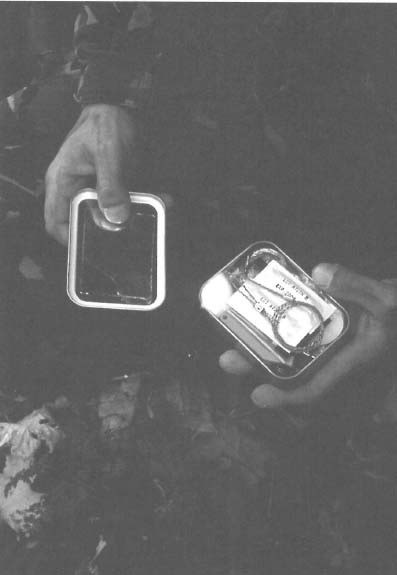
Anyone venturing into the desert, either by crossing it in an aircraft [other than a commercial flight] or by vehicle, should be well prepared for any emergency situation.
In the desert the availability and ability to collect water is a priority, so pack items that will help you find and maintain a water supply.
Any desert survival will almost certainly involve some form of travel during which the bulk of any water supplies will need to be carried; and water is heavy.
Clothing is needed that will protect the body from the suns heat during the day and from the extreme cold of the desert night.
Every item included in a survival kit has to be of real use, and its usefulness must be judged against its size and weight. Ultimately, each item must increase your chances of survival in and rescue from situations in which you may initially have no other resources apart from the clothes you stand up in.
Survival Kit
A survival kit could save your life. Whenever you embark upon any journey or activity where a survival situation might occur, make sure that you have a survival kit with you and, most importantly, that it is on your person.
Each item must be evaluated for its usefulness and, ideally, its adaptability to different uses, make sure that the sole purpose of one item is not duplicated by another. Once you have decided upon your final selection, pack the items neatly in an airtight and waterproof container such as a metal tobacco tin, a screw-top cylindrical metal container, a waterproof plastic box, or a resealable polythene bag inside a sturdy canvas pouch. Whichever container you choose, once it has been packed with the relevant selection of kit for the particular conditions you face it should not be opened until needed.
Next page
